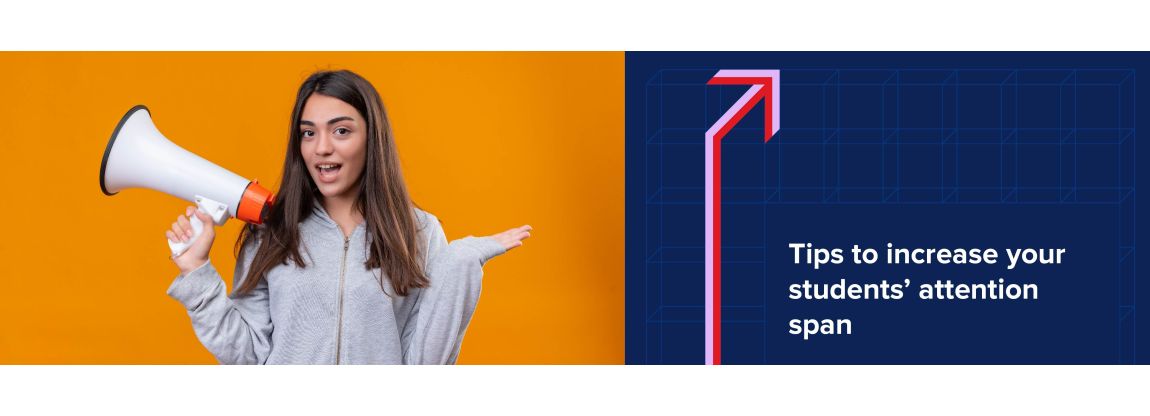Tips to increase your students’ attention span
It has been observed universally that the students tend to get bored if they feel obligated rather than excited to learn something. Many instructors have noticed students whispering to one another, tapping their feet, fidgeting in their chairs and most of all, making hidden attempts to sneak a peek at their devices. Within a few short minutes of class, their concentration and focus are overrun by disengagement. There are a lot of research that support these observations.
Although most classes last for 30 minutes to an hour, the attention span of a typical student is only about 10 to 15 minutes. These days it’s a rare occurrence to have the whole class fully engaged for the entire period. Studies have also confirmed that attention spans of students are decreasing with the increased use of technology and social media.
Here are some useful tips to capture and maintain the students’ attention span during the class.
1. Create interest in the lesson:
One of the best ways to get students engaged is through developing their interest in the content. You may open your lesson with a hook that sparks curiosity, conduct a survey, pose a personal question, or use music. Once a connection is established between the content and the students, they will find the relevance of the subject matter and then they will pay attention in the class too. By doing something that the students totally didn’t expect is a good way of gaining their attention.
2. Break delivery of content into multiple short lessons:
As an instructor you don’t want to overwhelm your students with a lot of information in one class or you may risk losing their attention very soon. Try to keep the instructional session to 15-20 minutes where you may introduce a new topic and then give some time to the students to engage with the material. This engagement can be fostered through group activities or individual learning tasks. The students feel encouraged to engage with the material when they’re responsible to other members of their group or for demonstrating their personal understanding.
3. Collaborative discussion during lessons:
One way to keep students engaged is by letting them get involved so that they can play an active role in their learning. Instead of speaking at your students, speaking with them will make them feel more connected. Teaching students in a collaborative manner will motivate them to participate in the class discussions and offer an enhanced learning experience.
4.Get students up and moving:
Try to provide an opportunity to your students to move around the classroom. You may plan to create activities that require students to work in different spaces of the classroom and something that also elevates peer-to-peer interaction. Physical movement during learning stimulates improved neuro connections in the brain and promotes increased focus. It also keeps students always active and engaged with the topic of discussion.
5.Incorporate technology into the classroom:
You can use relevant technology to help deliver the content in your class and achieve student engagement. There are a variety of digital learning tools that you can utilise in the classroom to facilitate active learning and increase student participation.
Competing for students’ attention in the classroom is one of the most-commonly faced challenges for the instructors these days. They are required to be creative in their teaching approach to ensure that the students are connected and feel the benefits of attending the class. They need to utilise strategies that can help students feel engaged during the class to become proficient.

